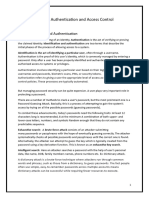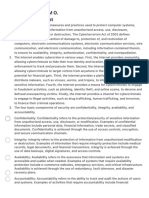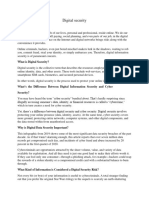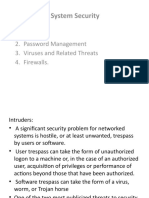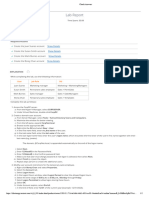0% found this document useful (0 votes)
26 views5 pagesUser Authentication and Access Control (10 Marks)
The document outlines the processes of identification and authentication, emphasizing their roles in network security. It details the significance of usernames and passwords, along with their management and security challenges. Additionally, it describes various password attack methods, including piggybacking, shoulder surfing, and dumpster diving, highlighting how attackers exploit these vulnerabilities to gain unauthorized access.
Uploaded by
sandeshlahane901Copyright
© © All Rights Reserved
We take content rights seriously. If you suspect this is your content, claim it here.
Available Formats
Download as DOCX, PDF, TXT or read online on Scribd
0% found this document useful (0 votes)
26 views5 pagesUser Authentication and Access Control (10 Marks)
The document outlines the processes of identification and authentication, emphasizing their roles in network security. It details the significance of usernames and passwords, along with their management and security challenges. Additionally, it describes various password attack methods, including piggybacking, shoulder surfing, and dumpster diving, highlighting how attackers exploit these vulnerabilities to gain unauthorized access.
Uploaded by
sandeshlahane901Copyright
© © All Rights Reserved
We take content rights seriously. If you suspect this is your content, claim it here.
Available Formats
Download as DOCX, PDF, TXT or read online on Scribd
/ 5

